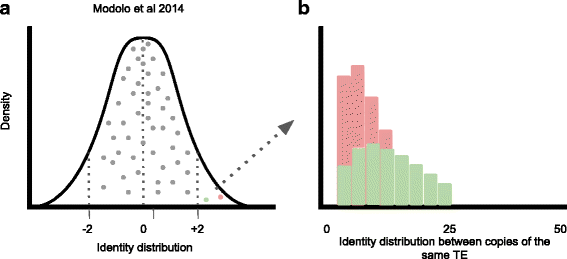Genetic exchange in eukaryotes through horizontal transfer: connected by the mobilome
- PMID: 29422954
- PMCID: PMC5791352
- DOI: 10.1186/s13100-018-0112-9
Genetic exchange in eukaryotes through horizontal transfer: connected by the mobilome
Abstract
Background: All living species contain genetic information that was once shared by their common ancestor. DNA is being inherited through generations by vertical transmission (VT) from parents to offspring and from ancestor to descendant species. This process was considered the sole pathway by which biological entities exchange inheritable information. However, Horizontal Transfer (HT), the exchange of genetic information by other means than parents to offspring, was discovered in prokaryotes along with strong evidence showing that it is a very important process by which prokaryotes acquire new genes.
Main body: For some time now, it has been a scientific consensus that HT events were rare and non-relevant for evolution of eukaryotic species, but there is growing evidence supporting that HT is an important and frequent phenomenon in eukaryotes as well.
Conclusion: Here, we will discuss the latest findings regarding HT among eukaryotes, mainly HT of transposons (HTT), establishing HTT once and for all as an important phenomenon that should be taken into consideration to fully understand eukaryotes genome evolution. In addition, we will discuss the latest development methods to detect such events in a broader scale and highlight the new approaches which should be pursued by researchers to fill the knowledge gaps regarding HTT among eukaryotes.
Keywords: Detection methods; Horizontal transfer; Horizontal transmission; Impact on host genomes; Transposable elements.
Conflict of interest statement
Not applicable.Not applicable.The authors declare that they have no competing interests.Springer Nature remains neutral with regard to jurisdictional claims in published maps and institutional affiliations.
Figures





References
Publication types
LinkOut - more resources
Full Text Sources
Other Literature Sources

